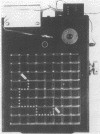Abstract
Men with chronic, penetrating missile wounds of the brain were examined with two `spatial' tasks: a visually-guided stylus maze and a locomotor map-reading task. Men whose lesions involved the posterior part of the right cerebral hemisphere were significantly worse than those with left posterior lesions at stylus maze-learning. On the locomotor task, however, a highly significant deficit was found in the group of men with bilateral posterior cerebral lesions, while those with unilateral lesions of either hemisphere and those with bilateral frontal lesions were unimpaired. The contributions of the two cerebral hemispheres to the analysis of spatial information are discussed in the light of these results and it is suggested that, while the right hemisphere has a special role in the perception of space, it does not bear exclusive responsibility for the maintenance of spatial orientation.
Full text
PDF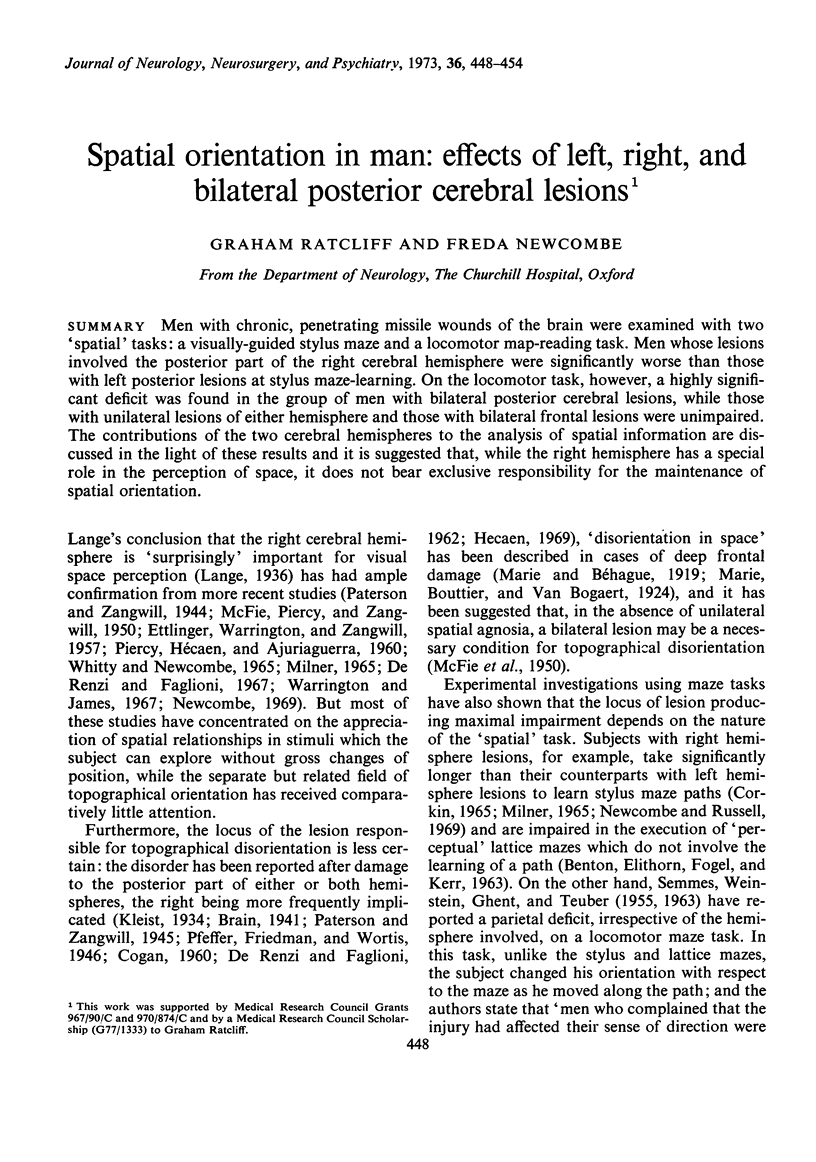
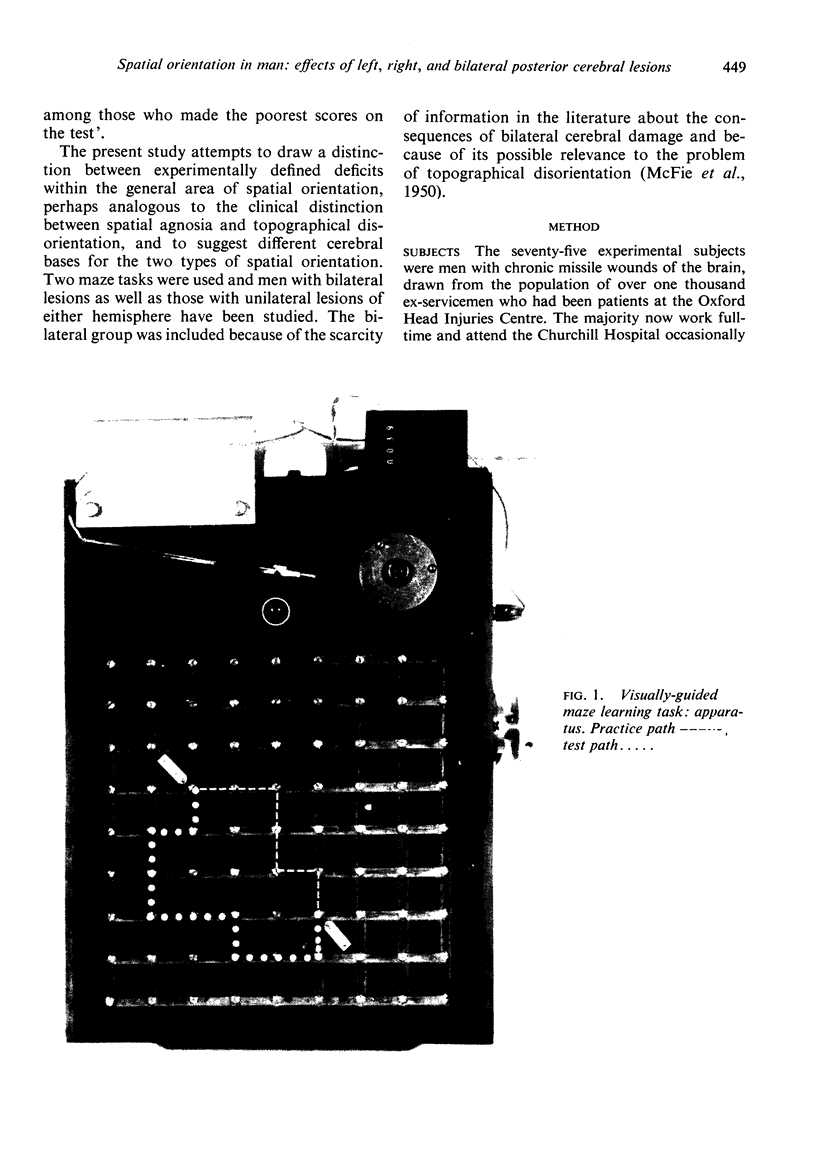
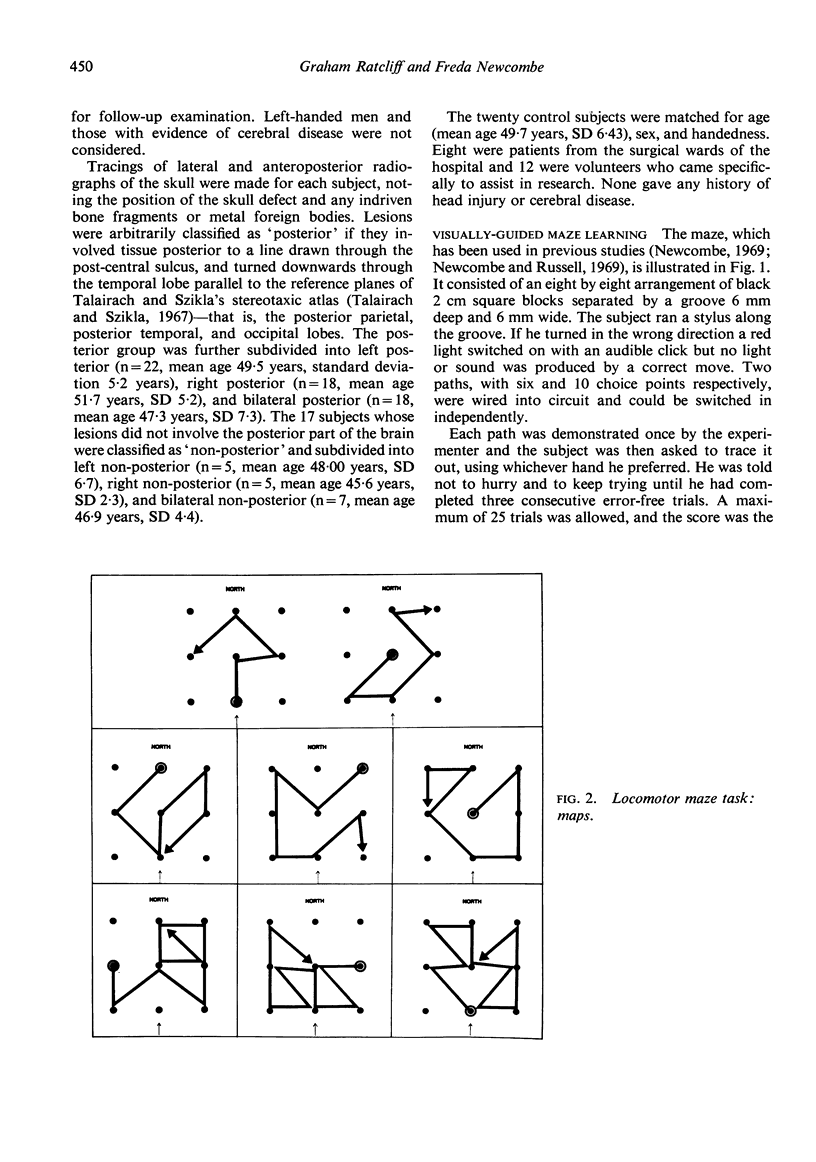
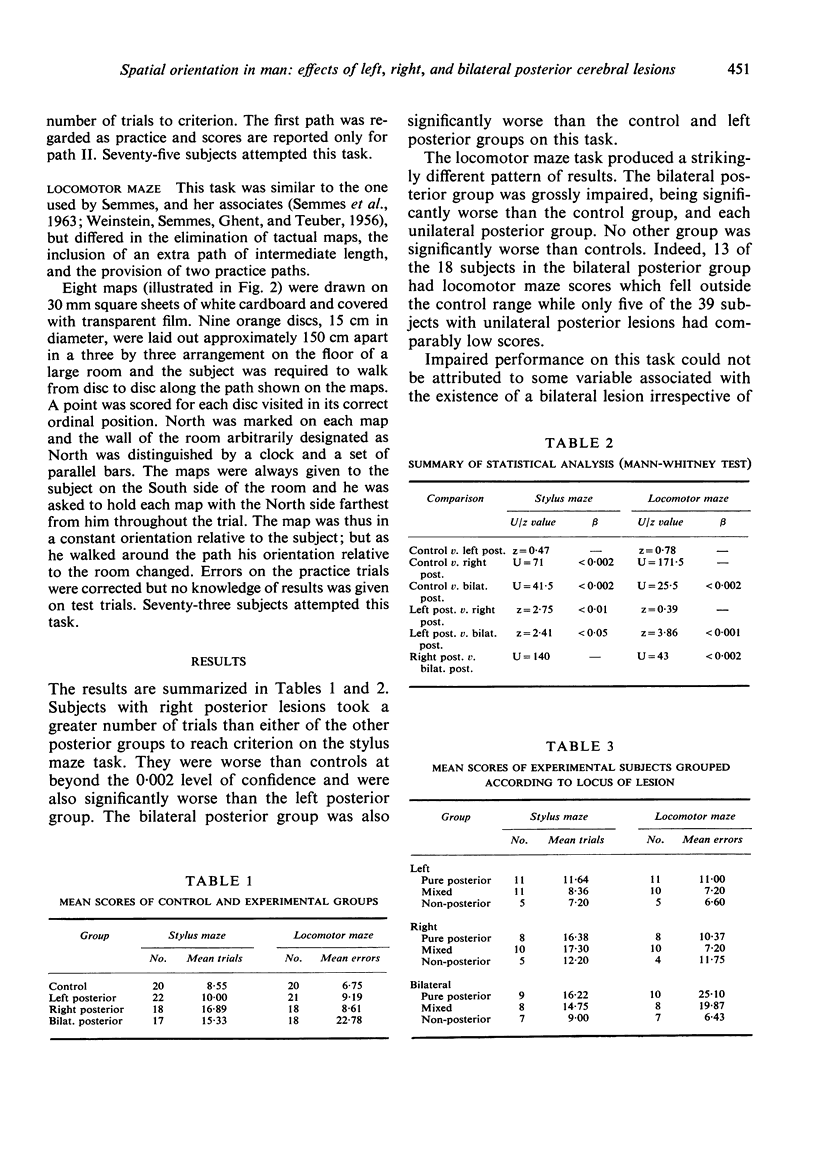
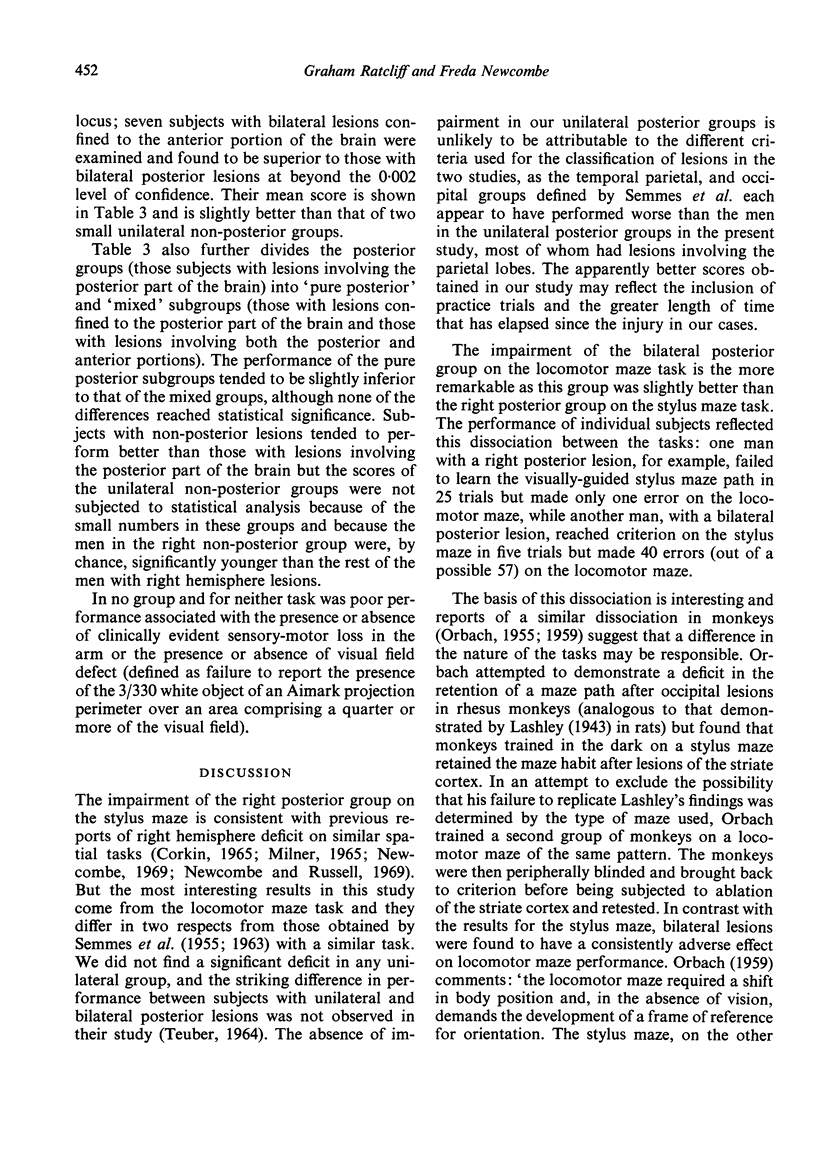
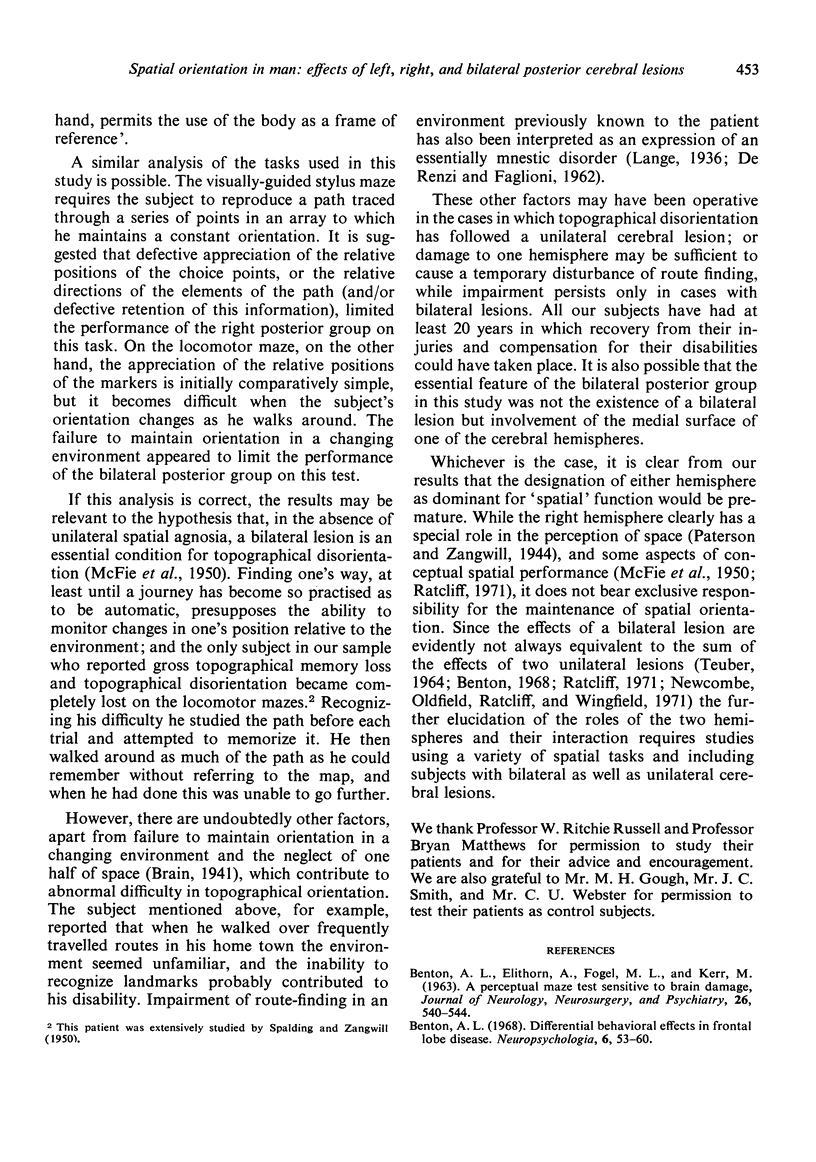
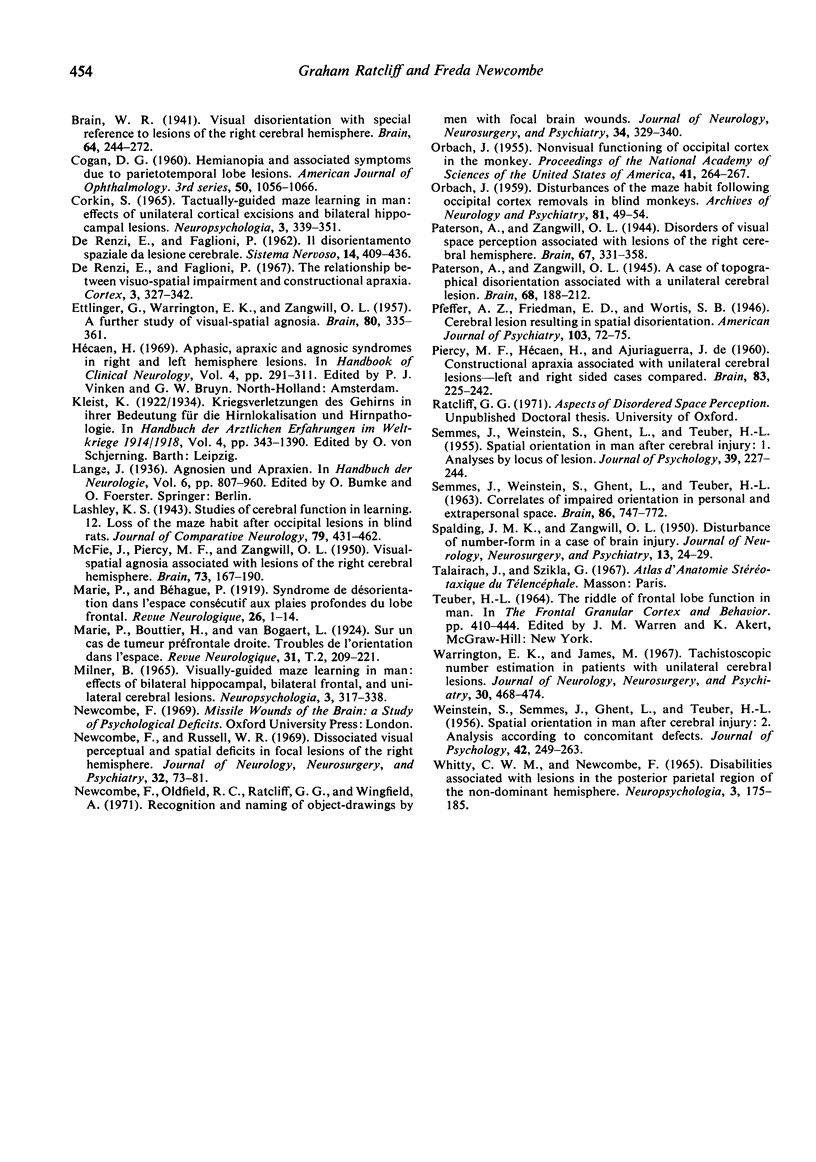
Images in this article
Selected References
These references are in PubMed. This may not be the complete list of references from this article.
- BENTON A. L., ELITHORN A., FOGEL M. L., KERR M. A PERCEPTUAL MAZE TEST SENSITIVE TO BRAIN DAMAGE. J Neurol Neurosurg Psychiatry. 1963 Dec;26:540–544. doi: 10.1136/jnnp.26.6.540. [DOI] [PMC free article] [PubMed] [Google Scholar]
- COGAN D. G. Hemianopia and associated symptoms due to parietotemporal lobe lesions. Am J Ophthalmol. 1960 Dec;50:1056–1066. doi: 10.1016/0002-9394(60)90992-2. [DOI] [PubMed] [Google Scholar]
- DE RENZI E., FAGLIONI P. [Spatial disorientation in cerebral lesions]. Sist Nerv. 1962 Nov-Dec;14:409–436. [PubMed] [Google Scholar]
- ETTLINGER G., WARRINGTON E., ZANGWILL O. L. A further study of visual-spatial agnosia. Brain. 1957 Sep;80(3):335–361. doi: 10.1093/brain/80.3.335. [DOI] [PubMed] [Google Scholar]
- McFIE J., PIERCY M. F., ZANGWILL O. L. Visual-spatial agnosia associated with lesions of the right cerebral hemisphere. Brain. 1950 Jun;73(2):167–190. doi: 10.1093/brain/73.2.167. [DOI] [PubMed] [Google Scholar]
- Newcombe F., Oldfield R. C., Ratcliff G. G., Wingfield A. Recognition and naming of object-drawings by men with focal brain wounds. J Neurol Neurosurg Psychiatry. 1971 Jun;34(3):329–340. doi: 10.1136/jnnp.34.3.329. [DOI] [PMC free article] [PubMed] [Google Scholar]
- ORBACH J. Disturbances of the maze habit following occipital cortex removals in blind monkeys. AMA Arch Neurol Psychiatry. 1959 Jan;81(1):49–54. doi: 10.1001/archneurpsyc.1959.02340130069007. [DOI] [PubMed] [Google Scholar]
- Orbach J. NONVISUAL FUNCTIONING OF OCCIPITAL CORTEX IN THE MONKEY. Proc Natl Acad Sci U S A. 1955 May 15;41(5):264–267. doi: 10.1073/pnas.41.5.264. [DOI] [PMC free article] [PubMed] [Google Scholar]
- PIERCY M., HECAEN H., de AJURIAGUERRA Constructional apraxia associated with unilateral cerebral lesions-left and right sided cases compared. Brain. 1960;83:225–242. doi: 10.1093/brain/83.2.225. [DOI] [PubMed] [Google Scholar]
- SEMMES J., WEINSTEIN S., GHENT L., TEUBER H. L. CORRELATES OF IMPAIRED ORIENTATION IN PERSONAL AND EXTRAPERSONAL SPACE. Brain. 1963 Dec;86:747–772. doi: 10.1093/brain/86.4.747. [DOI] [PubMed] [Google Scholar]
- SPALDING J. M. K., ZANGWILL O. L. Disturbance of number-form in a case of brain injury. J Neurol Neurosurg Psychiatry. 1950 Feb;13(1):24–29. doi: 10.1136/jnnp.13.1.24. [DOI] [PMC free article] [PubMed] [Google Scholar]
- Warrington E. K., James M. Tachistoscopic number estimation in patients with unilateral cerebral lesions. J Neurol Neurosurg Psychiatry. 1967 Oct;30(5):468–474. doi: 10.1136/jnnp.30.5.468. [DOI] [PMC free article] [PubMed] [Google Scholar]



